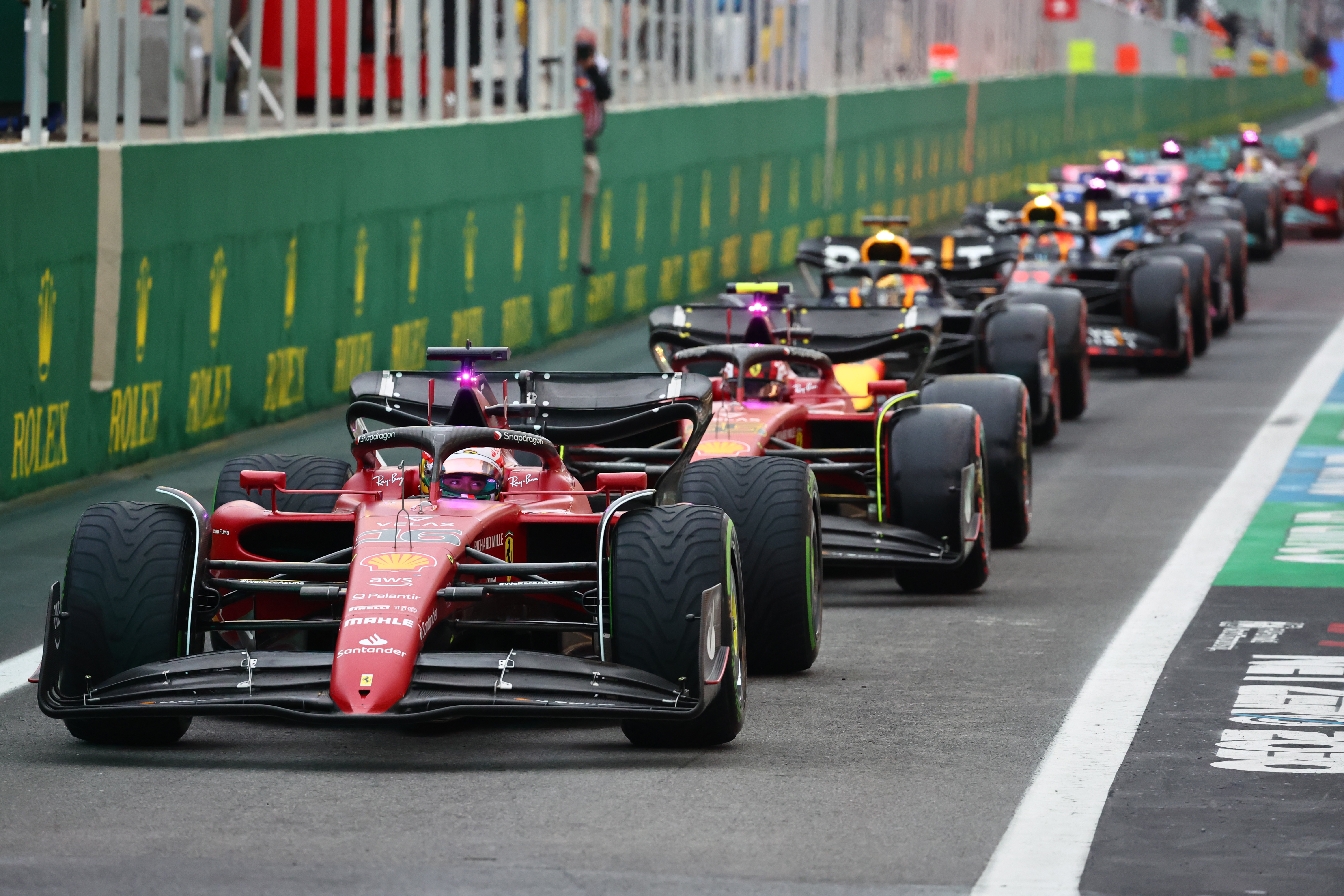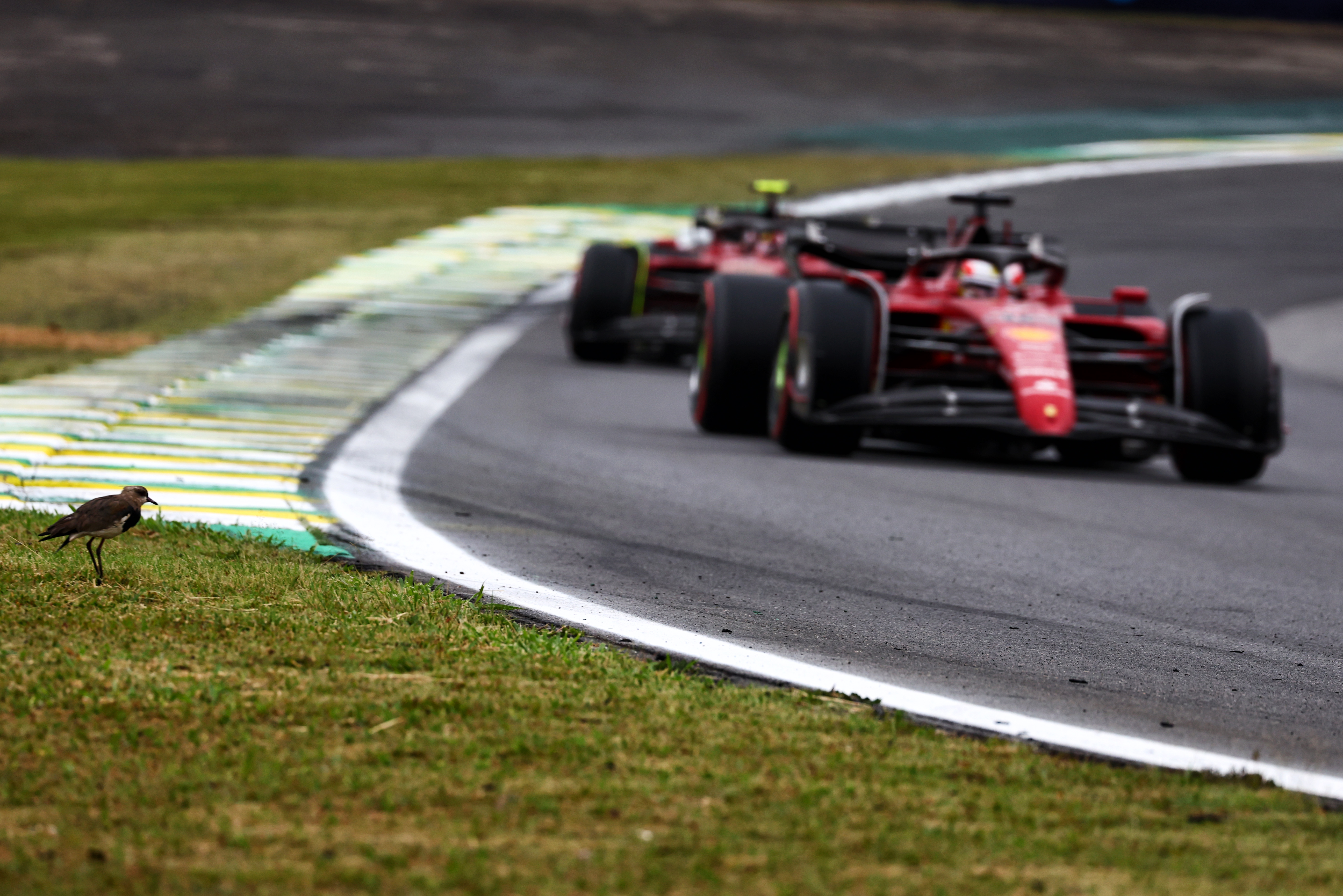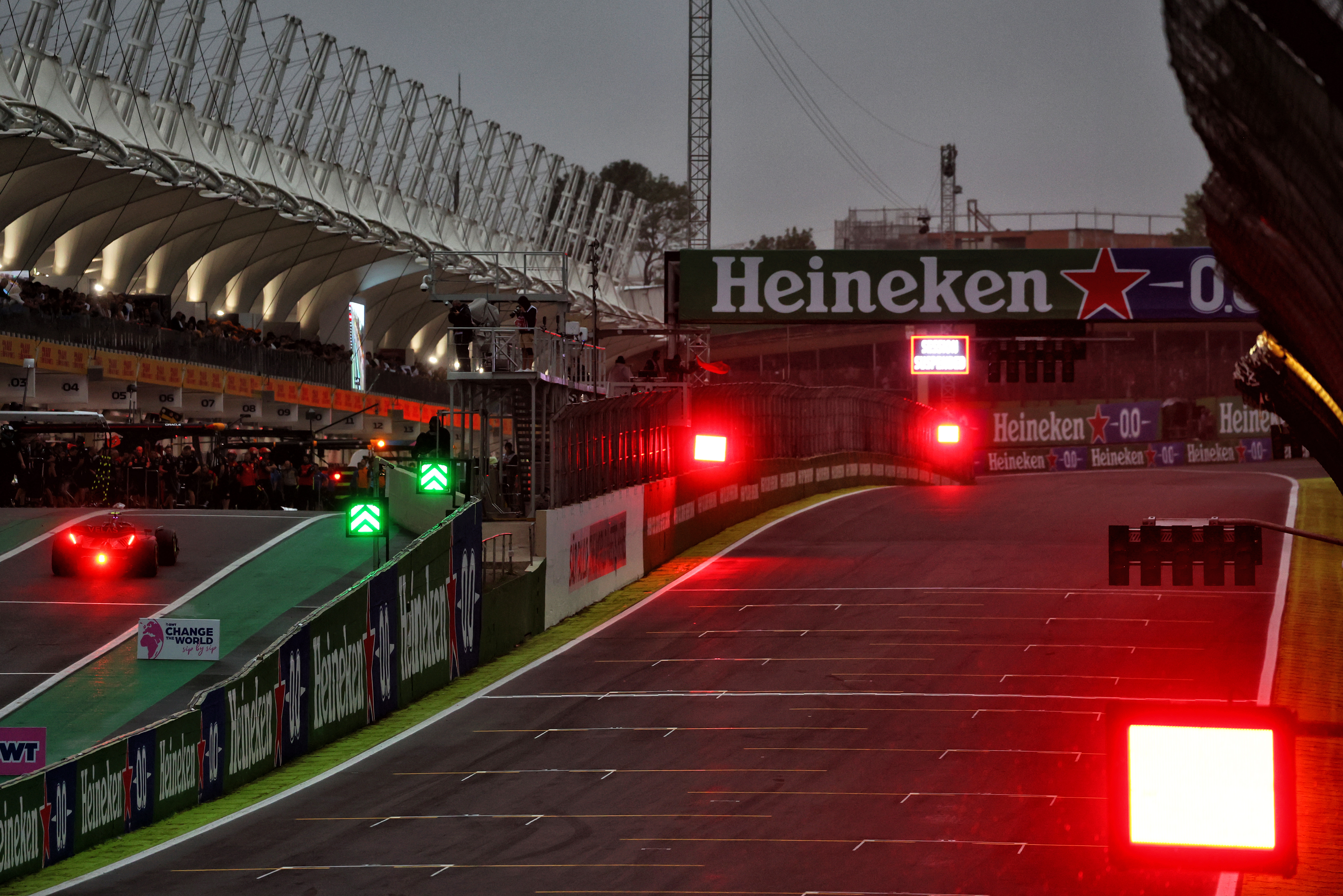For far from the first time in the 2022 Formula 1 season, Ferrari was left trying to explain the logic behind a tactical decision that disadvantaged its erstwhile title hopeful Charles Leclerc after Brazilian Grand Prix qualifying.
“Am I the only one on inters?” Leclerc asked over the radio with a tone somewhere between anxious and bemused as he set out onto a conspicuously dry track at the start of Interlagos Q3.
He was told that he was indeed the only inters-shod car in an otherwise all-slick field, information that made his subsequent “there is absolutely no rain for now” radio message rather pointed.

Called in for slicks before he’d even reached the end of an unsurprisingly uncompetitive lap on the inters, and then unable to do a flying lap before George Russell caused the red flag under which the rain actually turned up, Leclerc mournfully asked “did everybody complete a lap on slicks?” and responded with a sardonic “nice, beautiful…” and some swearing when given the answer that made clear Ferrari had got its tactics wrong again and he’d be starting the sprint race 10th.
“We were expecting some rain which never came,” Leclerc said afterwards.
“I will speak with the team and try to understand what we can do better in those conditions, but extremely disappointing. The pace was there. But, yeah, whatever.
“I accepted the decision to go on inters and then I just waited for the rain that never came.”
Leclerc’s not quite right there in that the rain did come, and fairly swiftly too. And the weather radar as Q3 began did show a substantial rain band about to hit the track any moment. But even without the Russell red flag, the damage was done as soon as everyone else got time to complete a flying lap on slicks while Leclerc was still on inters.
The only window in which the tactic would have worked would have been if it rained the moment Q3 began and Leclerc was in a uniquely sweet spot of being able to get a near-dry-pace inters lap in before the track got too wet.

Ferrari sporting director Laurent Mekies acknowledged that his team had gone against a “golden rule” by taking to a dry track with non-dry tyres but argued, “we were expecting heavy rain immediately”.
He admitted the fact Ferrari hedged its bets by putting Carlos Sainz on slicks probably guaranteed it would have one good result and one bad one – though Sainz only managed fifth.
“You always know at that very moment as your cars are going out [on different tyre strategies] that depending on the exact timing of the rain it is going to be one happy man and one unhappy man, and that’s exactly what happened,” Mekies said.
He doesn’t believe Ferrari was too far out in its weather calculations – and indeed the fact shock polesitter Kevin Magnussen was first over the line in the brief part of dry Q3 running and those behind him felt conditions were worsening showed that Ferrari wasn’t far from getting it right with Leclerc.
“The rain came probably a minute too late for Charles and it was probably the right timing for Carlos,” reckoned Mekies.
But while Sainz had the right tyres for the moment, he was stuck behind Leclerc coming out of the pits at the start of Q3, saying over team radio “he’s compromising me, he needs to let me go” before they’d even got through the pitlane exit.
Leclerc let Sainz through approaching the Descida do Lago, meaning the slick-shod Ferrari spent around 30 seconds behind the one struggling on intermediates.
As well as that costing Sainz seconds of fully dry track running on what would be his only proper Q3 lap, it also would have compromised his efforts to get the tyres fully up to temperature on the out-lap.
“We tried to be in the queue first but we lost quite a bit of time behind Charles and we lost a bit of time to Kevin,” said Sainz.
“This meant that he probably had a drier track than us at that point.
“But I tried to push a lot and probably over-pushed. I did a couple of big moments that probably cost me P2 or P3.
“But P1 today was for Kevin. I think he deserves it, I’m a big fan of him and I’m happy for him.”

At times this year when it’s had strategic calamities to try to defend, Ferrari’s been accused of taking a no-blame culture too far in how it fails to acknowledge errors, or attempting to play down failings a team of its calibre should be above.
Mekies’ portrayal of what happened on Friday at Interlagos may well be seen by critics as falling into that category too.
He certainly accepted Ferrari needed to learn from what had happened, but came across perhaps too sanguine about that situation given his team is supposed to be one of F1’s benchmarks and aiming for titles every season.
“It was a difficult qualifying. It was very intense for all teams,” Mekies said.
“It’s the sort of qualifying where you need to make a lot of calls. Some of the ones we made today worked, some of them worked less. Altogether it’s a bit frustrating because we got both cars into Q3 and then we had a tough choice.”
Mekies added that Ferrari would “look at how we could operate better as a group, and for sure we’ll use today to make another step forward”, but also argued that Ferrari had enough qualifying successes in 2022 to prove it did know what it was doing in changeable weather situations and could – while trying to prevent a repeat – consider the Interlagos miscue an anomaly.
“We have had many, many good qualifyings this year, including in very tricky conditions like today,” said Mekies.
“For sure in these sort of difficult situations there is always a lot to learn about the right decision to make and the less right decision to make.”





